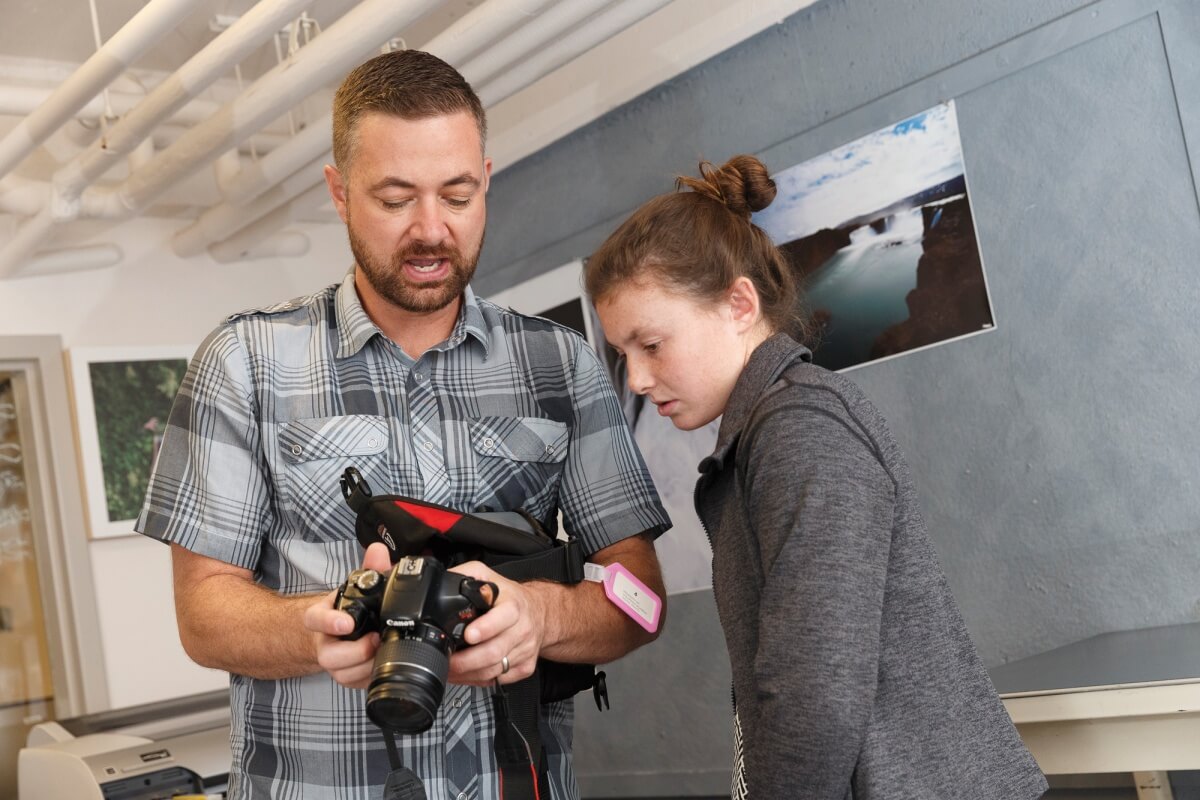“I really got to know Spain through my camera,” says Abel Ramirez, slightly hiding a smile. Sitting under the shade of a tree on CA’s campus, the senior’s enthusiasm betrays his quiet composure as he relives his experiences in the European country.
Three months earlier, almost to the day, Abel was in a much different setting. He was in the midst of a parade on the streets of Barcelona the day the city was crowned the king of Europe. For the fifth time, Barcelona won the Champions League final in soccer. Children and adults alike were lighting up the night with sparklers and fireworks, celebrating in a giddy glory that vibrated on the streets. Abel was lighting up the night with a camera flash.
“They would run up to us with their giant sparklers and point them at us and we’d take photos and they’d love it,” he says.
“It definitely makes me want to travel everywhere in the world just so I can learn and notice new things through photography.”
“Us” refers to himself and Upper School Photography teacher Jesse Myers, Abel’s teacher for 4 years. Myers, along with Upper School social studies teacher Miten Patel, was leading the group of 17 students in Spain on a history and photography trip. Abel credits his curiosity for photography to Myers, who, according to the budding photographer, tells students what they need to know and lets them figure the rest out.
“He’s very much into teaching us one technique and letting us learn by ourselves. Then when we need help, he’s always there to guide us.” According to professor of Psychology at Carnegie Mellon University, George Loewenstein, this is the best way to pique curiosity — presenting material that is intriguing but also incomplete. It was in that way that Abel started changing the focus of his subjects while in Spain.
“Most of my photography up until that point, I would characterize as surreal,” he says, describing how he loved photo manipulations that would distort an image. However, after capturing photos of raw human emotion, he became intrigued. “I would take photos of people interacting, and I would really like the emotion you could see.”
Sometimes Abel would simply take candid shots. Other times, he would introduce himself to the locals and ask if he could take their photograph. According to Myers, that’s one perk of photography. “For many, being behind the lens of a camera gives them the confidence to enter into new environments,” he says.
For Abel, being behind the lens also made him take deeper notice of his surroundings — not just of the people, but of the architecture.
“I definitely would not have noticed some things without it,” he says about using his camera inside La Sagrada Familia, the cathedral by architect Antoni Gaudi, characterized by its distorted forms and kaleidoscopic patterns. “With my camera, I was looking everywhere to figure out where I could get a great symmetry shot.”
Abel has been on many photography trips, including one to Iceland in 2013, also led by Myers. There, he marveled through his lens at glaciers, ocean and volcanoes.
Though not a photography trip, the 2014 service-oriented trip he went on in Rwanda also saw him with camera in hand. “I take it with me everywhere,” he says. “It could be a new country or down the street, because you never know when a perfect photo is waiting.”
Abel says that while he likes experiencing places through his camera, he also enjoys having others experience those places through his photos — something Myers can attest to. “It empowers the artist to have a voice through imagery,” he says.
Though Abel has only been taking photographs since his freshman — and first — year at CA, it’s a hobby he plans on keeping for the rest of his life.
“It definitely makes me want to travel everywhere in the world just so I can learn and notice new things through photography.”
